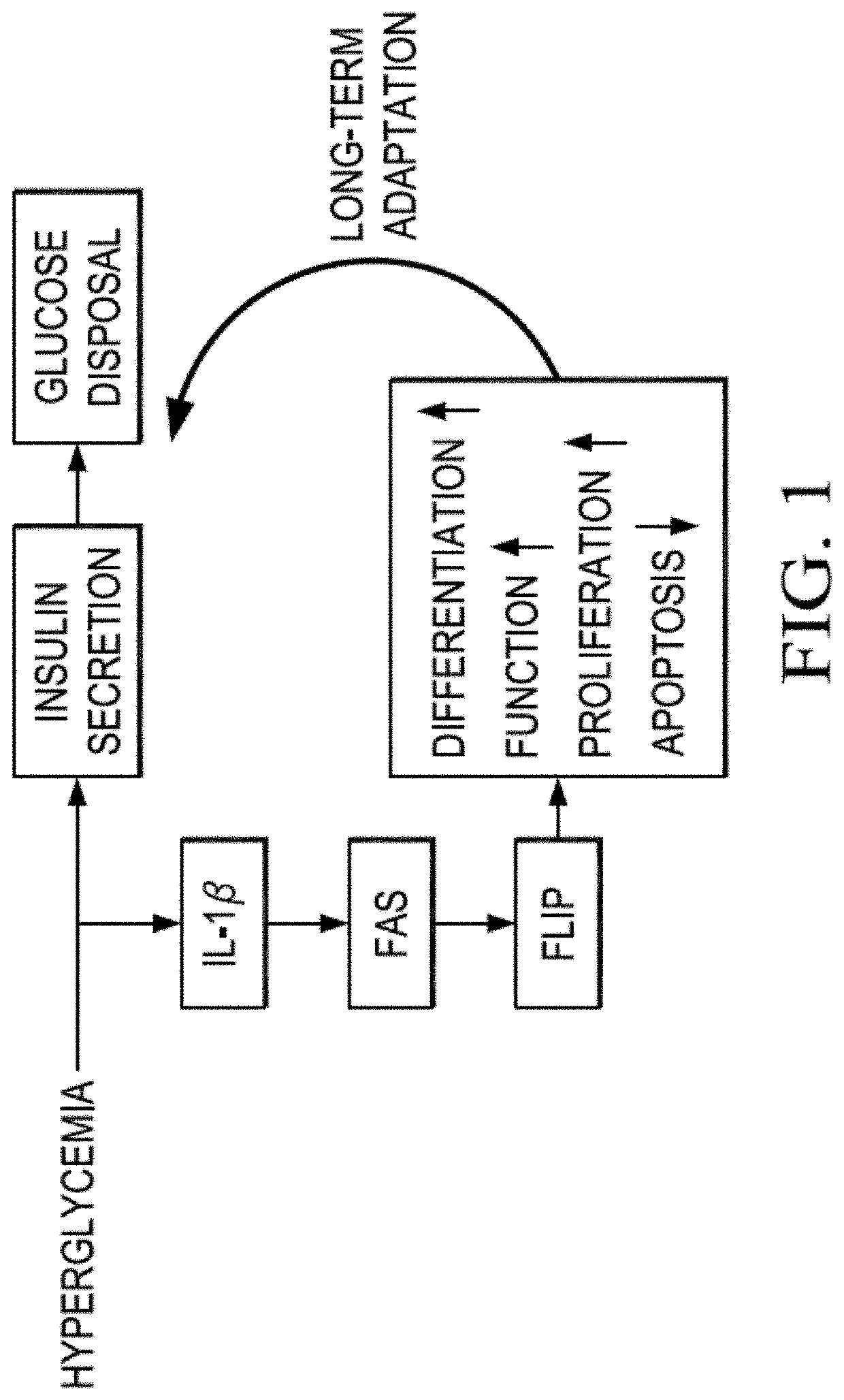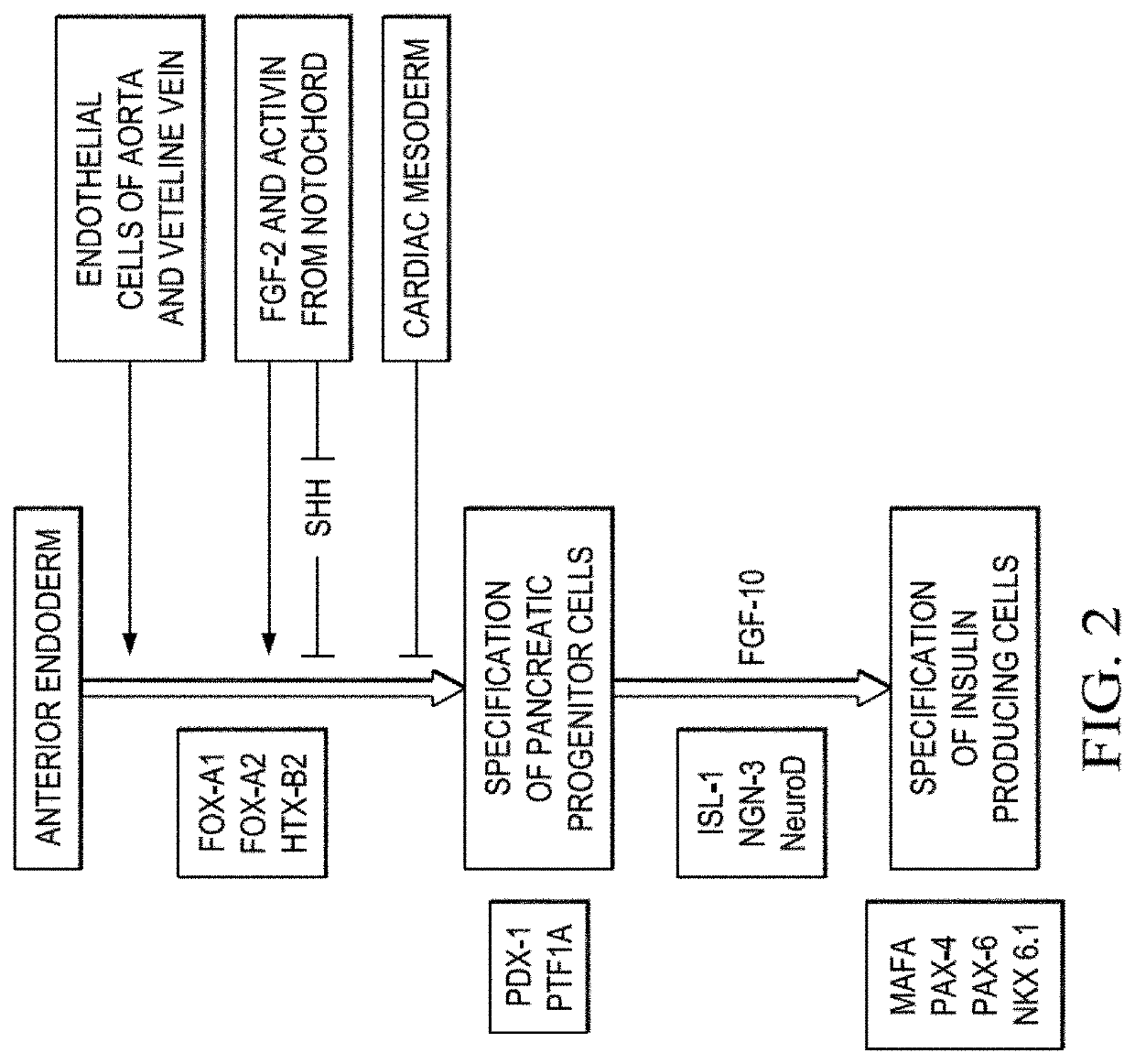Self replicating RNA for inducing somatic differentiation of unmodified adult stem cells
a somatic differentiation and self-replicating technology, applied in the direction of genetically modified cells, skeletal/connective tissue cells, peptides, etc., can solve the problems of impaired insulin secretion capacity, impaired glucose-stimulated insulin secretion, and impaired insulin resistance of beta cells, etc., to eliminate rejection problems, easy to access, and readily available
- Summary
- Abstract
- Description
- Claims
- Application Information
AI Technical Summary
Benefits of technology
Problems solved by technology
Method used
Image
Examples
Embodiment Construction
[0073]To differentiate ADSCs into pancreatic islet cells, adipose tissue derived stem cells are transduced for sequential transcription and translation, with different combinations of β-cell inducing factors, including PDX1, NGN3 and MAFA, such that the proteins appear in the differentiating cell sequentially (PDX1>NGN3>MAFA).
[0074]Although we used sequential transduction to demonstrate proof of concept, some overlap in the time frames of action of transcription factors may be preferred or acceptable, which would of course require co-transfection of srRNAs or using sRNAs encoding at least two transcription factors. However, this will subject the cells to less stress during the transduction or transfections and may be preferred. In yet another embodiment, the proteins themselves could be introduced sequentially, or mRNA encoding same.
[0075]Akinci (2013) attempted a similar experiment and did induce some differentiation towards beta-cells. However, he did not use adult human stem cell...
PUM
| Property | Measurement | Unit |
|---|---|---|
| length of time | aaaaa | aaaaa |
| time | aaaaa | aaaaa |
| time | aaaaa | aaaaa |
Abstract
Description
Claims
Application Information
 Login to View More
Login to View More - R&D
- Intellectual Property
- Life Sciences
- Materials
- Tech Scout
- Unparalleled Data Quality
- Higher Quality Content
- 60% Fewer Hallucinations
Browse by: Latest US Patents, China's latest patents, Technical Efficacy Thesaurus, Application Domain, Technology Topic, Popular Technical Reports.
© 2025 PatSnap. All rights reserved.Legal|Privacy policy|Modern Slavery Act Transparency Statement|Sitemap|About US| Contact US: help@patsnap.com



